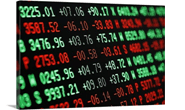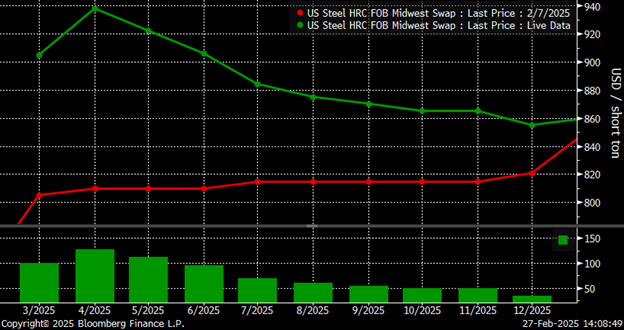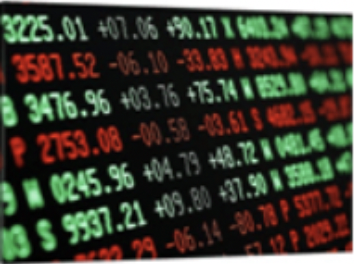Futures

Hot Rolled Futures: HRC Volume Steady at 10,000 Tons
Written by Bradley Clark
February 26, 2015
Hot rolled prices continued lower this week with the CRU down $9 to $508/ton with HRC futures following suit. Q2 has been trading around $510/ton with March trading as low as $503/ton – $13 lower than the week prior. The second half of 2015 is reasonably higher with Q3 and Q4 both trading around $535/ton. Some think the market is near a bottom, citing the stabilization of lead times recently. Others are more pessimistic, alluding to low oil prices and cheap raw materials costs. The low price of raw materials such as iron ore appears to be the new norm and has given mills much more room to negotiate on pricing.
Oil companies in the U.S. have responded to the recent plunge in oil prices by cutting production. As supply is taken out of the market, oil prices may push higher in the months to come.
Despite slowing growth abroad, the U.S. economy has remained resilient. Housing starts were slightly down in January, but overall conditions in the housing market remain strong. Automotive sales lent support to steel prices last year with over 16 million vehicles sold. 2015 has seen this trend continue so far with a 14 percent increase in sales for January 2015.
Volume has been steady this week with 10,000 tons of HRC being traded so far.
Slowing exports for scrap and low raw material costs have continued to deteriorate scrap prices in the U.S. Scrap has been trading around $250/GT, and may trade sideways to slightly down into March. Scrap prices have struggled to find support the past year, and have steadily trended lower from $400/GT this time last year.
Below is an interactive graph of the HRC Futures Forward Curve. The graph can only be seen when reading this article while logged into our Steel Market Update website:
{amchart id=”73″ HRC Futures Forward Curve}
Another one of our interactive graphs is below with the BUS (CME Busheling Scrap) forward curve.
{amchart id=”74″ BUS Futures Forward Curve}
Bradley Clark
Read more from Bradley ClarkLatest in Futures

HR Futures: Market at crossroads after turbulent run
The market appears to be pausing after a turbulent run. But tension remains just beneath the surface. With net long positioning still elevated, sentiment-driven selling could quickly reignite volatility. Still, supply constraints and limited imports are laying the groundwork for a resilient physical market. This moment of calm feels more like a crossroads than a conclusion.

HR Futures: Traders’ views mixed as market navigates tariffs
A look at the HR futures market.

Market pressures trigger HR futures reversal
Market dynamics are shifting rapidly, with futures pricing diverging from physical fundamentals, creating a complex landscape for steel traders.

HR Futures: Correction in market after big rally
Another eventful week in the physical and financial steel markets is coming to a close, but with a markedly different tone than the last update at the end of February.

HR Futures: Market drifts lower on light volume
Over the past couple of weeks, Midwest HRC futures have been drifting lower on light volume. This begs the question if the rally has run out of steam, or is it catching its breath after ripping roughly $150 in less than two weeks? The April CME Midwest HRC future made an intraday high at $976 […]
